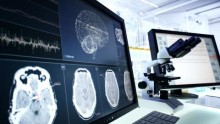211-220 of 4100 Results Found
What is VPI?
During speech, the soft palate (i.e., velum) closes against the back wall of the throat (i.e., pharynx), preventing air flow through the nose. Velopharyngeal insufficiency, or VPI, is a condition that occurs when the soft palate cannot close against the back wall of the throat
Conditions We Treat
"Craniofacial" includes the bones of the head and the face. Craniofacial conditions can be present at birth or they may be caused by injuries to the face or head. We perform craniosynostosis surgery using minimally invasive and endoscopic techniques to treat conditions including
Article
What is Intensive Care Multimodality Neurologic Monitoring?
What is Intensive Care Multimodality Neurologic Monitoring? Blog Brain Injury Multimodality Neurocritical Care Barrow Neurological Institute at Phoenix Children’s Multimodality neurologic monitoring in the neurocritical care unit is a method of continuous …

Infection Control
Infection Control - CF Identifier badge The Cystic Fibrosis Patient/Parent Workgroup with support from the Cystic Fibrosis Program at Phoenix Children’s has created a CF Identifier badge which can be picked up with your visitor badges. The idea of the CF Identifier badge
Fellowships
We are pleased to offer several fellowship opportunities within Radiology, including: A Pediatric Interventional Radiology Fellowship with one position for a fellow each academic year. A Pediatric Neuroradiology Fellowship with positions for two fellows each academic year. An
Advances in Care
Premium Ultrasound Imaging Advances Care Phoenix Children's new EPIQ Elite premium ultrasound system, from Royal Philips, offers a range of advanced diagnostic ultrasound solutions. It delivers extraordinary image quality to assess fetal abnormalities and potential complications
Article
Phoenix Children’s Names New Chief Operating Officer
With more than two decades’ experience in health system operations, Bradshaw will play an integral role in ensuring consistent, high-quality, integrated care across all sites of service as Phoenix Children’s continues its expansion across Arizona.
Article
Applauding the Doctors and Advanced Practice Providers of Phoenix Children’s for their remarkable efforts
Applauding the Doctors and Advanced Practice Providers of Phoenix Children’s for their remarkable efforts Blog COVID-19 Doctor’s Day In honor of Doctors’ Day , Phoenix Children’s Physician in Chief, Dr. Jared T. Muenzer shares his appreciation for the …

Conditions We Treat
Our team is involved in care for infants, children, teens, and young adults with a wide range of conditions, including: Aneurysms Arteriovenous malformations Biliary or liver problems Blood clots Bone tumors Cancer Genetic disorders Hemangiomas Juvenile Arthritis Kidney failure
Programs & Services
We offer comprehensive care for children with inflammatory bowel disease, from diagnosis and treatment to long-term monitoring and management. We even help your child transition to an adult care provider when the time comes.
